The adorable breed of dogs introduces the Internet to its home in Japan’s northern Akita Prefecture.
Street View
Since 2001, the Google Street View truck has been rolling through neighborhoods all over the world, taking photos of our towns and city streets in order add to its parent company’s enormous library of 3D street-level images. In the search for the perfect panoramic image, however, Google doesn’t always have time to wait around for the streets they’re mapping to clear, leading to the occasional unintentional photobomber.
Luckily, Google also has a pretty advanced facial technology recognition system, used to blur out the faces of those caught on camera as a way of protecting their privacy. The only caveat is that sometimes it works a little too well, and to hilarious results.
Just about every community in Japan puts on a local festival in the summer, but few are as spectacular as Aomori City’s Nebuta Matsuri. For almost a solid week, gigantic floats topped by lanterns shaped like samurai and dragons are paraded through the streets, accompanied by dancers and musicians.
But while Aomori is one of the largest cities in the largely rural Tohoku region of Japan, its relatively remote location in the northeastern corner of the country’s main island of Honshu means not everyone can make it out to see the festivities in-person. As long as you’ve got an Internet connection, though, you can get a taste of the fun with Google’s awesome Nebuta Matsuri Street View that lets you see the amazing floats even closer-up than spectators standing on the sidewalks the towering works of art are carried by.
It’s an amazing age we live in, where you can fire up Google Street View and virtually walk the boulevards of many of the world’s cities. But it turns out Google Street View has a bit of a rival in Japan. Granted, its scope is far smaller than Google’s, given that it only covers part of one town, but it shows up the Internet giant by letting you wander its walkways from the perspective of an alley cat, and even provides profiles of all the neighborhood kitties you’ll meet along the way!
Running underneath Kasukabe City, Saitama Prefecture, lies the Metropolitan Area Outer Underground Discharge Channel – a sprawling network of waterways as long as its name. Its 6.3 kilometers (3.9 miles) of tunnels are intended to divert flood water from area rivers.
Also, since the massive project was completed in 2009 its enormous columns and walls are in relatively pristine condition giving the place an almost magical atmosphere. As a result it’s earned the nickname of the “Underground Temple” and has been frequently used in movies and music videos.
Tours run regularly for free which you can join, or just take a peek right now from the comfort of your browser with Google Street View.
It turns out that there are a surprising number of mirrors in museums, so when Google unleashed its Street View cameras to catalog the insides of museums around the world, more than a few of them ended up accidentally taking pictures of themselves, we learn via Quartz.
Spanish artist Mario Santamaría noticed this happening quite a bit and did exactly what one should do upon noticing a trend: build a Tumblr around it.
Titled “The Camera In The Mirror,” Santamaría’s site catalogs the eerie moments in which Google’s cameras photograph their own reflections. You get a peek at them wrapped up in silver cloth or exposed to reveal a surprisingly robot-like body.
If you happen to be looking for directions around Mitaka Station in Musashino, Tokyo you might be in for an eerie surprise. As Google’s Street View camera strapped to a guy’s back passed through the quaint tree-lined path alongside the Tamagawa Aqueduct, it was momentarily surrounded by a group of people standing around wearing pigeon heads.
It seems Google Maps and Google Street View is truly unending in their quest to walk around and take panoramic photos of some of the Earth’s most beautiful locations. So far we’ve witnessed the eerie wonder of Gunkanjima and the spectacular sights of Mt. Fuji’s summit all courtesy of Google. And now we are treated to a place found on many people’s bucket list: Angkor, Cambodia.
Thanks to the internet and Google Street View, you can see the world from the comforts of your own home. Eat a turkey leg while touring the Palace of Versailles or walk through the Taipei Train Station in your birthday suit, it doesn’t matter what you’re doing or how little you’re wearing while virtually touring famous sites online.
If you’ve ever dreamed of traveling around Asia, but haven’t quite saved enough time or vacation days, you can always take a virtual tour on Google Street View. Let’s take a look at the top virtual tourism locations in Asia.
There’s a saying in Japan about Mt. Fuji that goes to the tune of, “You ought to climb it once, but only a fool would climb it twice.”
That’s because, as yours truly learned just last weekend, climbing Mt. Fuji is a lot like spending up to eight hours repeatedly swinging a mallet into your knees as hard as you can. It’s also – at least this year, after having been declared a World Heritage Site – so crowded you’re guaranteed to be spending the climb with your face in dangerous proximity to someone else’s ass at all times.
Lucky for those that haven’t climbed it yet, Google Street View strapped some poor sucker with 100 pounds of weird Google robot gear, maybe gave him a bottle of water and some peanuts, and told him to walk right on up and take some pictures from the top. “It’ll be cool,” they probably said. “We promise.”
Google Japan has announced that it is now possible for Google Maps users to access street view images of Namie, a coastal town in Fukushima that was severely affected by the March 11, 2011 earthquake and tsunami before being completely evacuated when the nearby Daiichi Nuclear Power Plant went critical.
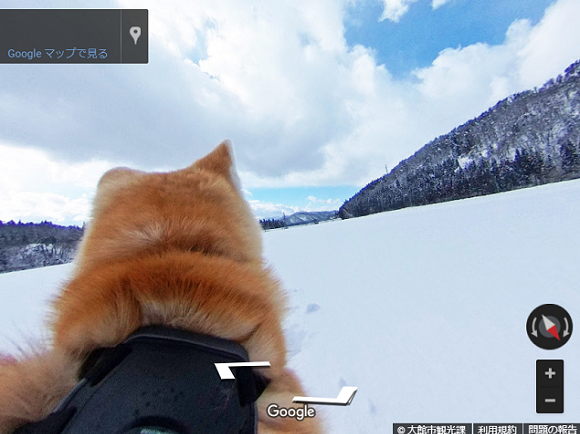
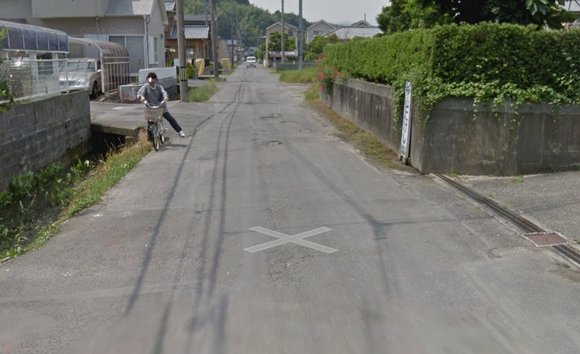
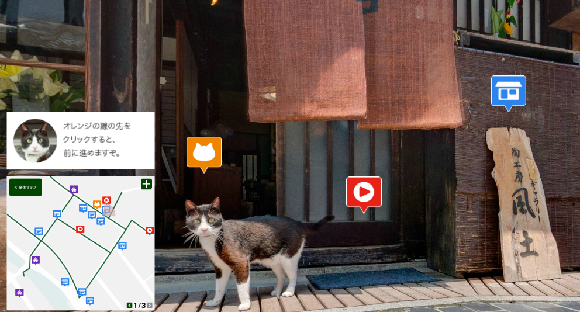
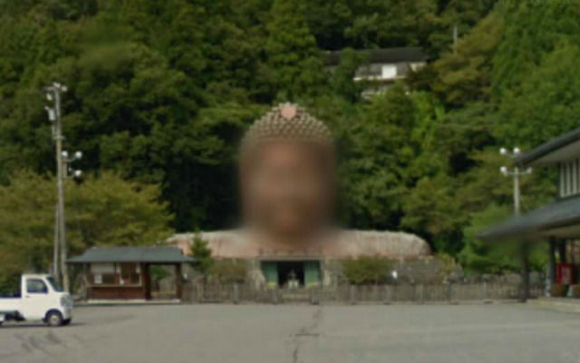
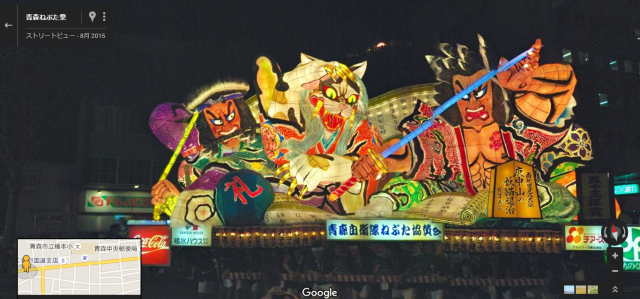

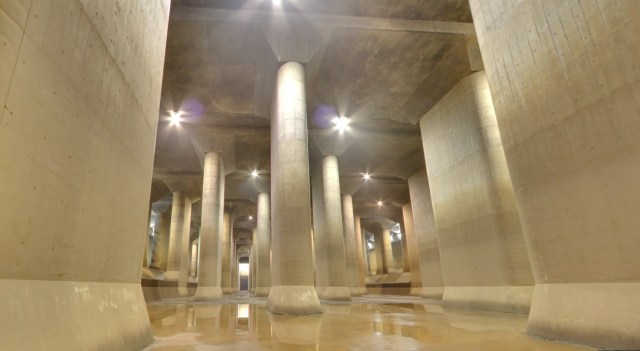
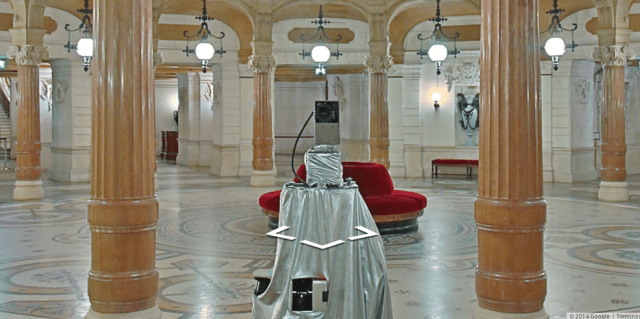
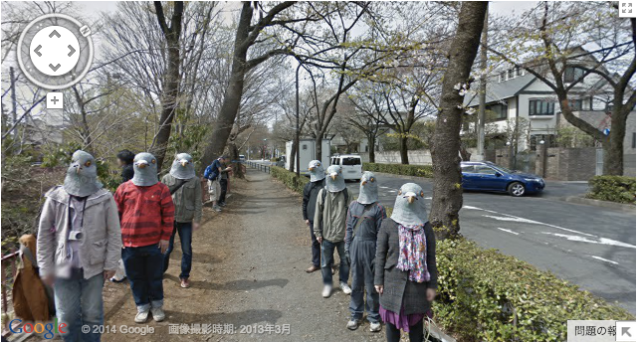
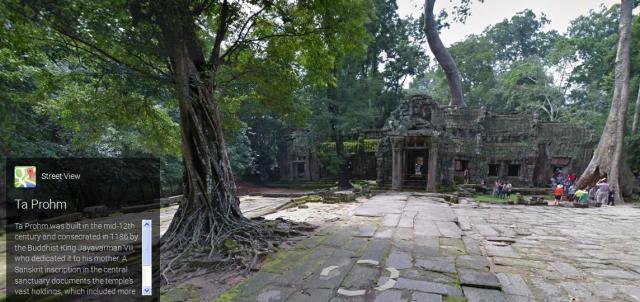
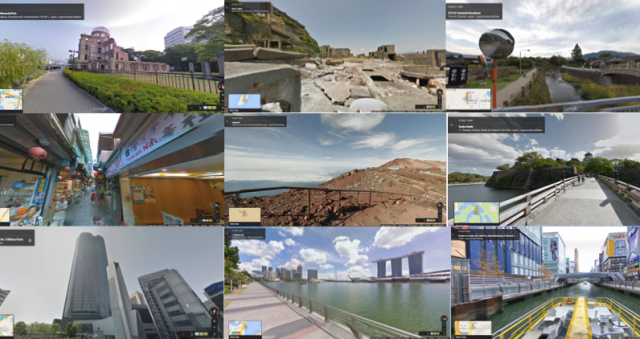
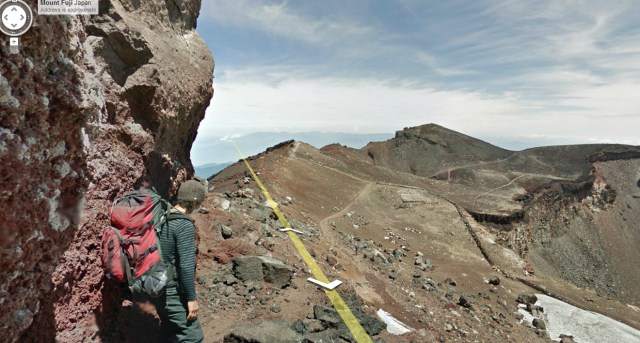
 Sumo Sanrio! Hello Kitty and pals team up with Japan Sumo Association for new merch【Pics】
Sumo Sanrio! Hello Kitty and pals team up with Japan Sumo Association for new merch【Pics】 7 great places to see Mt. Fuji from without having to climb it
7 great places to see Mt. Fuji from without having to climb it 7-Eleven Japan’s ramen-cooking robot whipped us up a bowl of noodles【Taste test】
7-Eleven Japan’s ramen-cooking robot whipped us up a bowl of noodles【Taste test】 Hello Kitty Choco Egg figures are an adorable trip through three periods of Japanese pop culture【Pics】
Hello Kitty Choco Egg figures are an adorable trip through three periods of Japanese pop culture【Pics】 Disillusionment at Tsukiji’s tourist-target prices led us to a great ramen restaurant in Tokyo
Disillusionment at Tsukiji’s tourist-target prices led us to a great ramen restaurant in Tokyo Let’s take a tour of the best sushi in Tokyo’s Tsukiji Fish Market with Mr. Sato! (Part 1)
Let’s take a tour of the best sushi in Tokyo’s Tsukiji Fish Market with Mr. Sato! (Part 1) Get ready with Roland, the top-earning host in Japan【Video】
Get ready with Roland, the top-earning host in Japan【Video】 Is it rude to sing along at concerts in Japan? We ask a pro musician for his take
Is it rude to sing along at concerts in Japan? We ask a pro musician for his take The best Japanese cosplayers from Day 2 of Summer Comiket 2019【Photos】
The best Japanese cosplayers from Day 2 of Summer Comiket 2019【Photos】 Yaizu: Japan’s best sushi market destination even most foodies in Japan have never heard of
Yaizu: Japan’s best sushi market destination even most foodies in Japan have never heard of Japan may add Japanese language proficiency, lifestyle classes to permanent foreign resident requirements
Japan may add Japanese language proficiency, lifestyle classes to permanent foreign resident requirements Lacquerware supplier to emperor of Japan and Pokémon team up for new tableware
Lacquerware supplier to emperor of Japan and Pokémon team up for new tableware Starbucks Japan releases new zodiac chilled cup drink for 2026
Starbucks Japan releases new zodiac chilled cup drink for 2026 Japan’s otoshidama tradition of giving kids money at New Year’s gets a social welfare upgrade
Japan’s otoshidama tradition of giving kids money at New Year’s gets a social welfare upgrade Cyberpunk anime meets traditional culture in Ghost in the Shell gold leaf Japanese changing screens
Cyberpunk anime meets traditional culture in Ghost in the Shell gold leaf Japanese changing screens 7-Eleven Japan starts new temporary luggage storage service in over 300 branches
7-Eleven Japan starts new temporary luggage storage service in over 300 branches Can a dirty butthole make you filthy rich in Japan? We’re starting a New Year’s lottery experiment
Can a dirty butthole make you filthy rich in Japan? We’re starting a New Year’s lottery experiment Japan’s human washing machines will go on sale to general public, demos to be held in Tokyo
Japan’s human washing machines will go on sale to general public, demos to be held in Tokyo Starbucks teams up with 166-year-old Kyoto doll maker for Year of the Horse decorations【Photos】
Starbucks teams up with 166-year-old Kyoto doll maker for Year of the Horse decorations【Photos】 Tokyo considering law requiring more trash cans following litter increase in heavily touristed area
Tokyo considering law requiring more trash cans following litter increase in heavily touristed area Tokyo’s Tsukiji sushi neighborhood asks tour groups to stay away for the rest of the month
Tokyo’s Tsukiji sushi neighborhood asks tour groups to stay away for the rest of the month Nintendo’s Kirby now delivering orders at Kura Sushi restaurants, but not in Japan
Nintendo’s Kirby now delivering orders at Kura Sushi restaurants, but not in Japan Tokyo event lets you travel back in time, for free, to celebrate 100 years since Showa era start
Tokyo event lets you travel back in time, for free, to celebrate 100 years since Showa era start Sanrio theme park in Japan announces plans to expand into a Sanrio resort
Sanrio theme park in Japan announces plans to expand into a Sanrio resort Stamina-destroying “Paralysis Noodles” are Tokyo’s newest over-the-top ramen innovation
Stamina-destroying “Paralysis Noodles” are Tokyo’s newest over-the-top ramen innovation Survey asks foreign tourists what bothered them in Japan, more than half gave same answer
Survey asks foreign tourists what bothered them in Japan, more than half gave same answer Japan’s deadliest food claims more victims, but why do people keep eating it for New Year’s?
Japan’s deadliest food claims more victims, but why do people keep eating it for New Year’s? We deeply regret going into this tunnel on our walk in the mountains of Japan
We deeply regret going into this tunnel on our walk in the mountains of Japan Studio Ghibli releases Kodama forest spirits from Princess Mononoke to light up your home
Studio Ghibli releases Kodama forest spirits from Princess Mononoke to light up your home Major Japanese hotel chain says reservations via overseas booking sites may not be valid
Major Japanese hotel chain says reservations via overseas booking sites may not be valid Put sesame oil in your coffee? Japanese maker says it’s the best way to start your day【Taste test】
Put sesame oil in your coffee? Japanese maker says it’s the best way to start your day【Taste test】 The top 10 annoying foreign tourist behaviors on trains, as chosen by Japanese people【Survey】
The top 10 annoying foreign tourist behaviors on trains, as chosen by Japanese people【Survey】 No more using real katana for tourism activities, Japan’s National Police Agency says
No more using real katana for tourism activities, Japan’s National Police Agency says Starbucks Japan reveals new sakura drinkware collection, inspired by evening cherry blossoms
Starbucks Japan reveals new sakura drinkware collection, inspired by evening cherry blossoms Let’s take a tour of the best sushi in Tokyo’s Tsukiji Fish Market with Mr. Sato! (Part 1)
Let’s take a tour of the best sushi in Tokyo’s Tsukiji Fish Market with Mr. Sato! (Part 1) Get ready with Roland, the top-earning host in Japan【Video】
Get ready with Roland, the top-earning host in Japan【Video】 Is it rude to sing along at concerts in Japan? We ask a pro musician for his take
Is it rude to sing along at concerts in Japan? We ask a pro musician for his take The best Japanese cosplayers from Day 2 of Summer Comiket 2019【Photos】
The best Japanese cosplayers from Day 2 of Summer Comiket 2019【Photos】 Yaizu: Japan’s best sushi market destination even most foodies in Japan have never heard of
Yaizu: Japan’s best sushi market destination even most foodies in Japan have never heard of 11 different ways to say “father” in Japanese
11 different ways to say “father” in Japanese Is the new Shinkansen Train Desk ticket worth it?
Is the new Shinkansen Train Desk ticket worth it? We take on the Baskin-Robbins Japan 31-day challenge and live to tell these tips
We take on the Baskin-Robbins Japan 31-day challenge and live to tell these tips Princesses, fruits, and blacksmiths: Study reveals the 30 most unusual family names in Japan
Princesses, fruits, and blacksmiths: Study reveals the 30 most unusual family names in Japan More Than a Capsule Stay: Why Solo Travelers Choose “global cabin Yokohama Chinatown”
More Than a Capsule Stay: Why Solo Travelers Choose “global cabin Yokohama Chinatown” Can a dirty butthole make you filthy rich in Japan? We’re starting a New Year’s lottery experiment
Can a dirty butthole make you filthy rich in Japan? We’re starting a New Year’s lottery experiment Black Thunder chocolate-bar-shaped fishing lures coming next year
Black Thunder chocolate-bar-shaped fishing lures coming next year